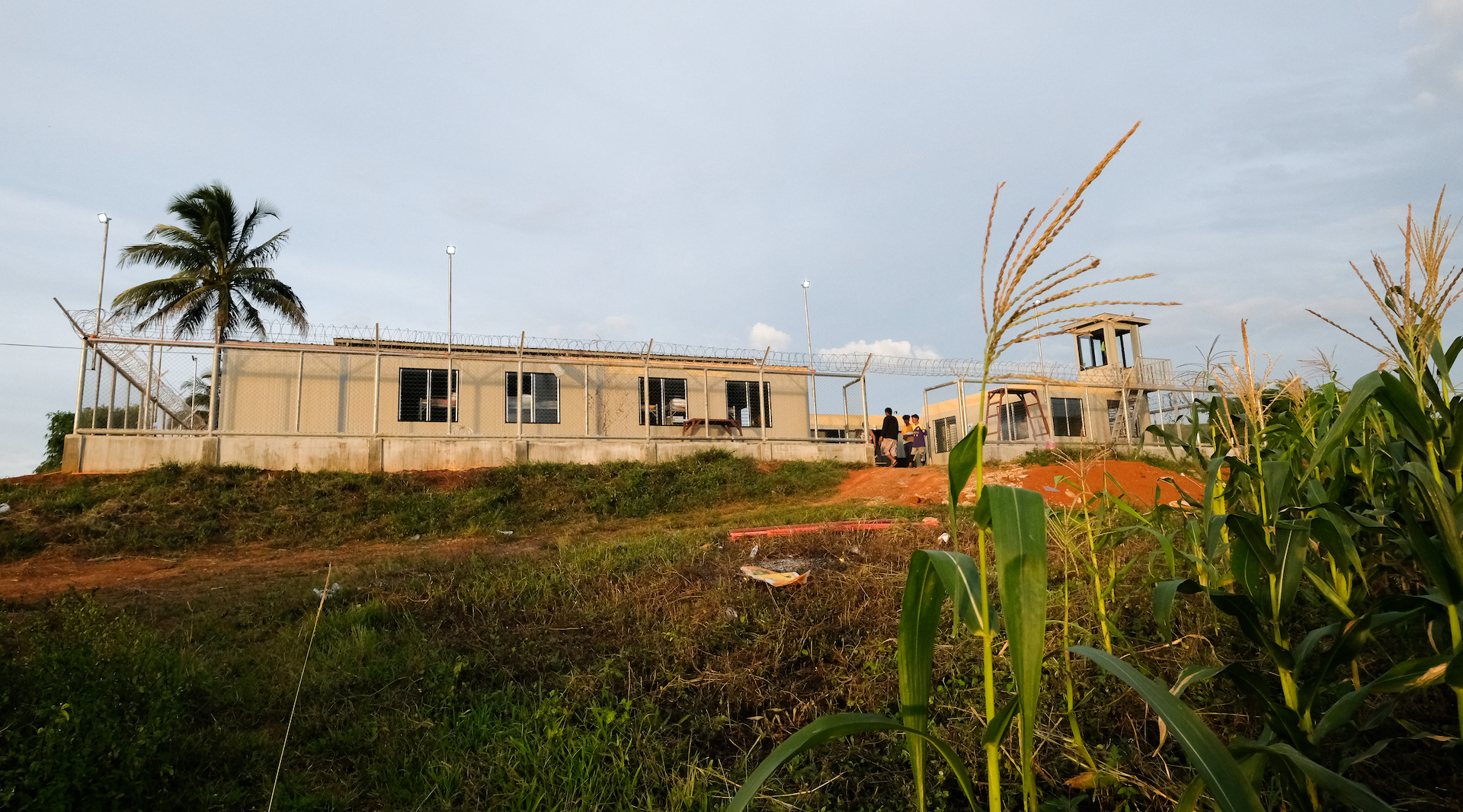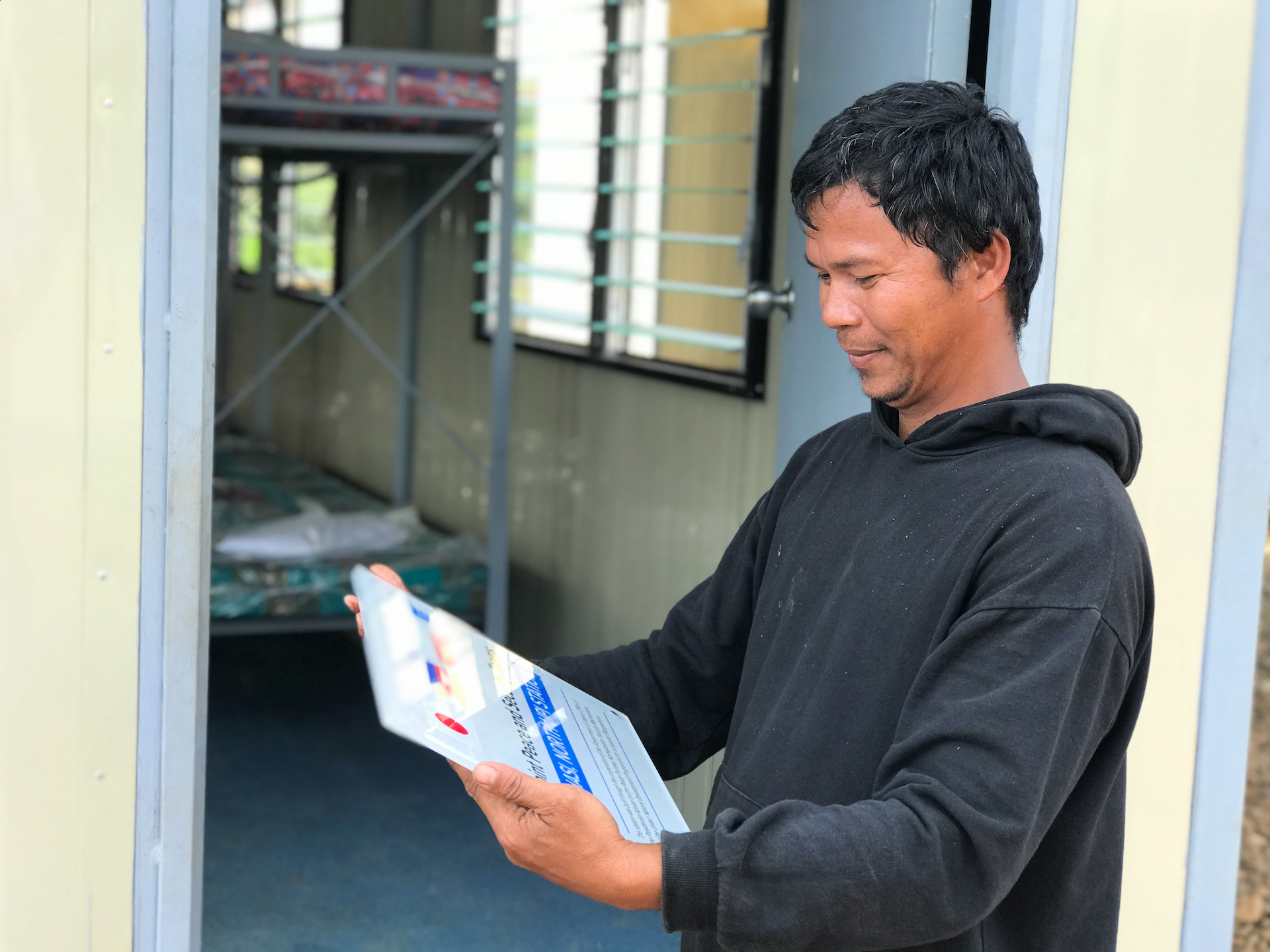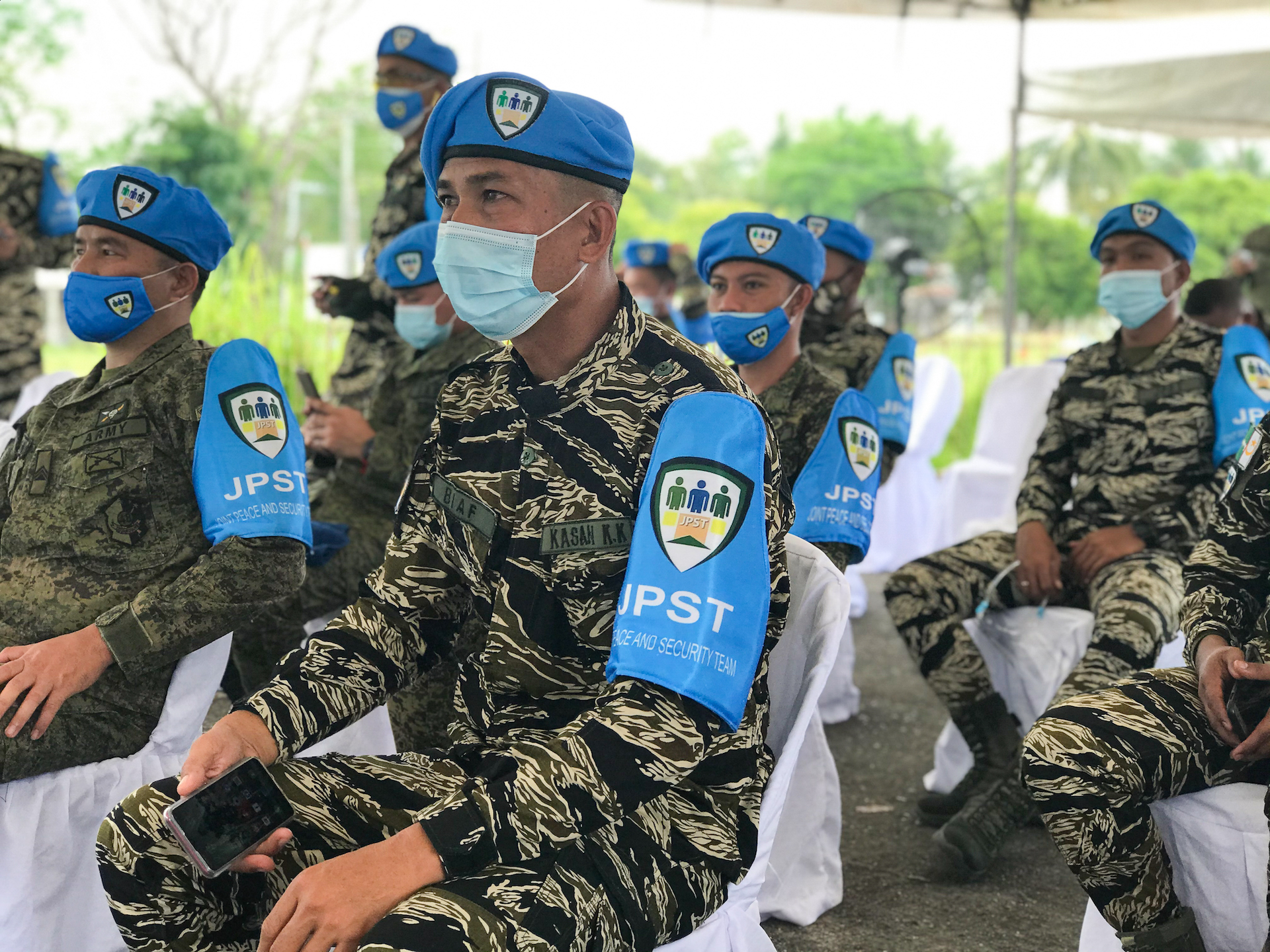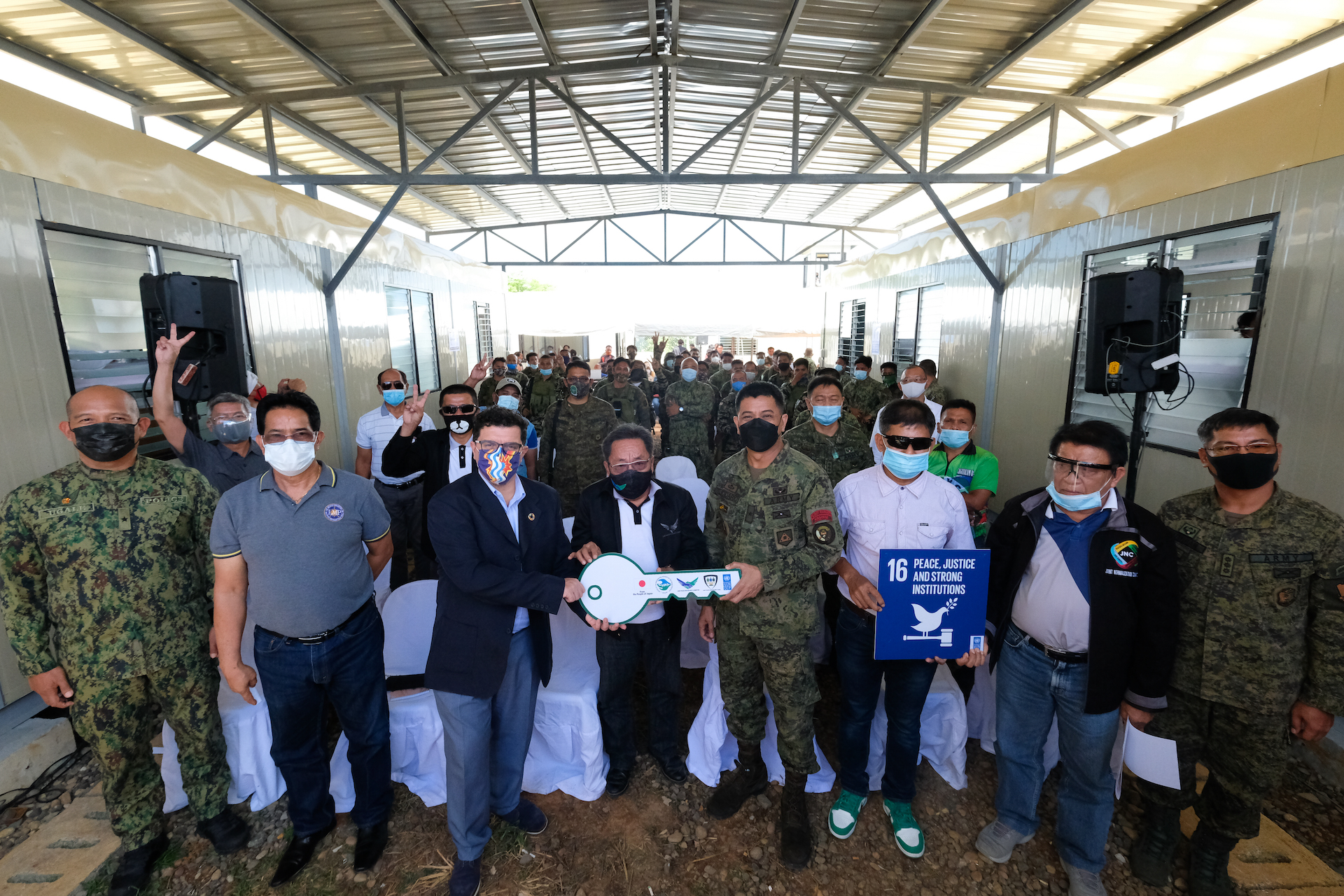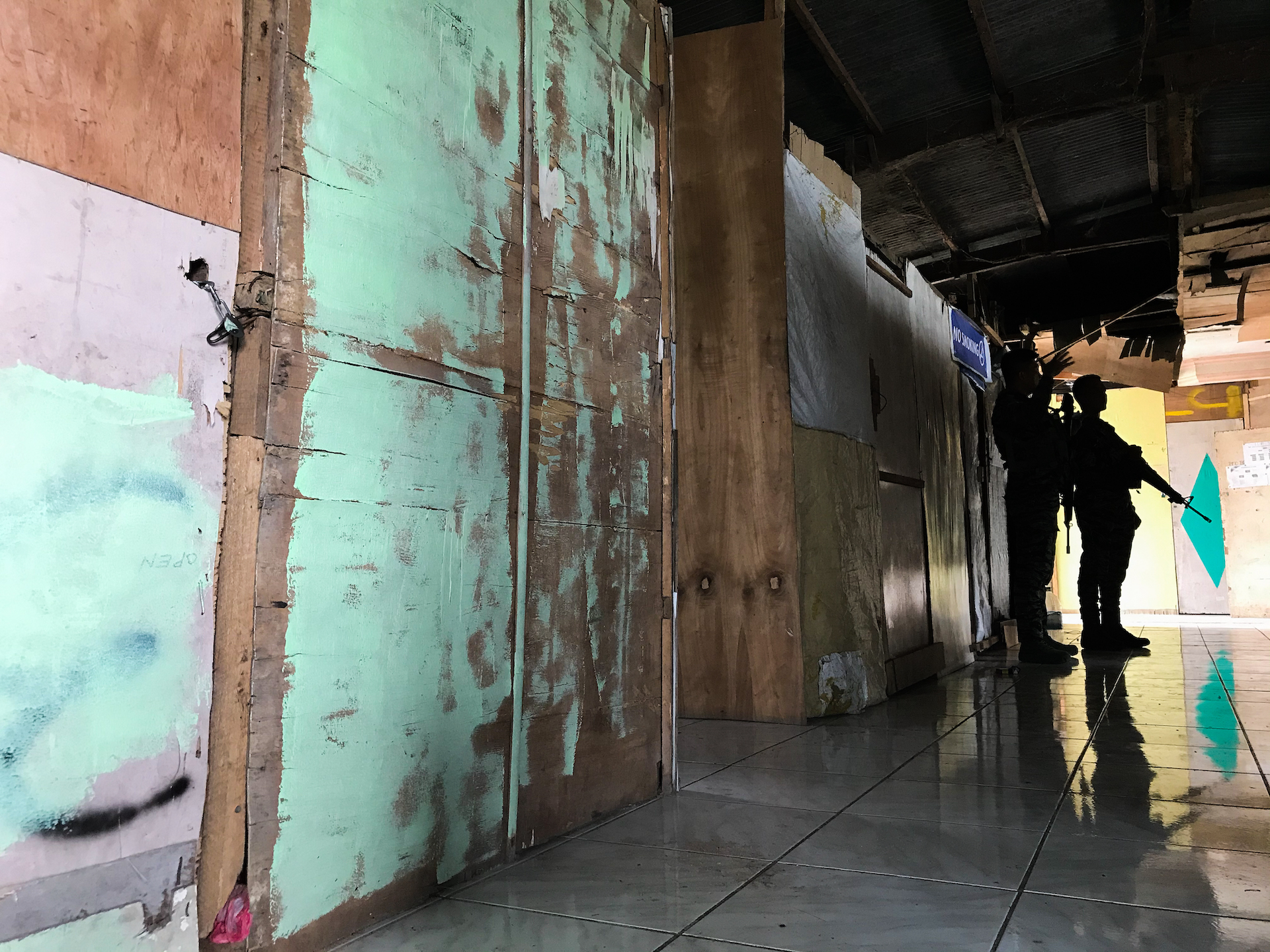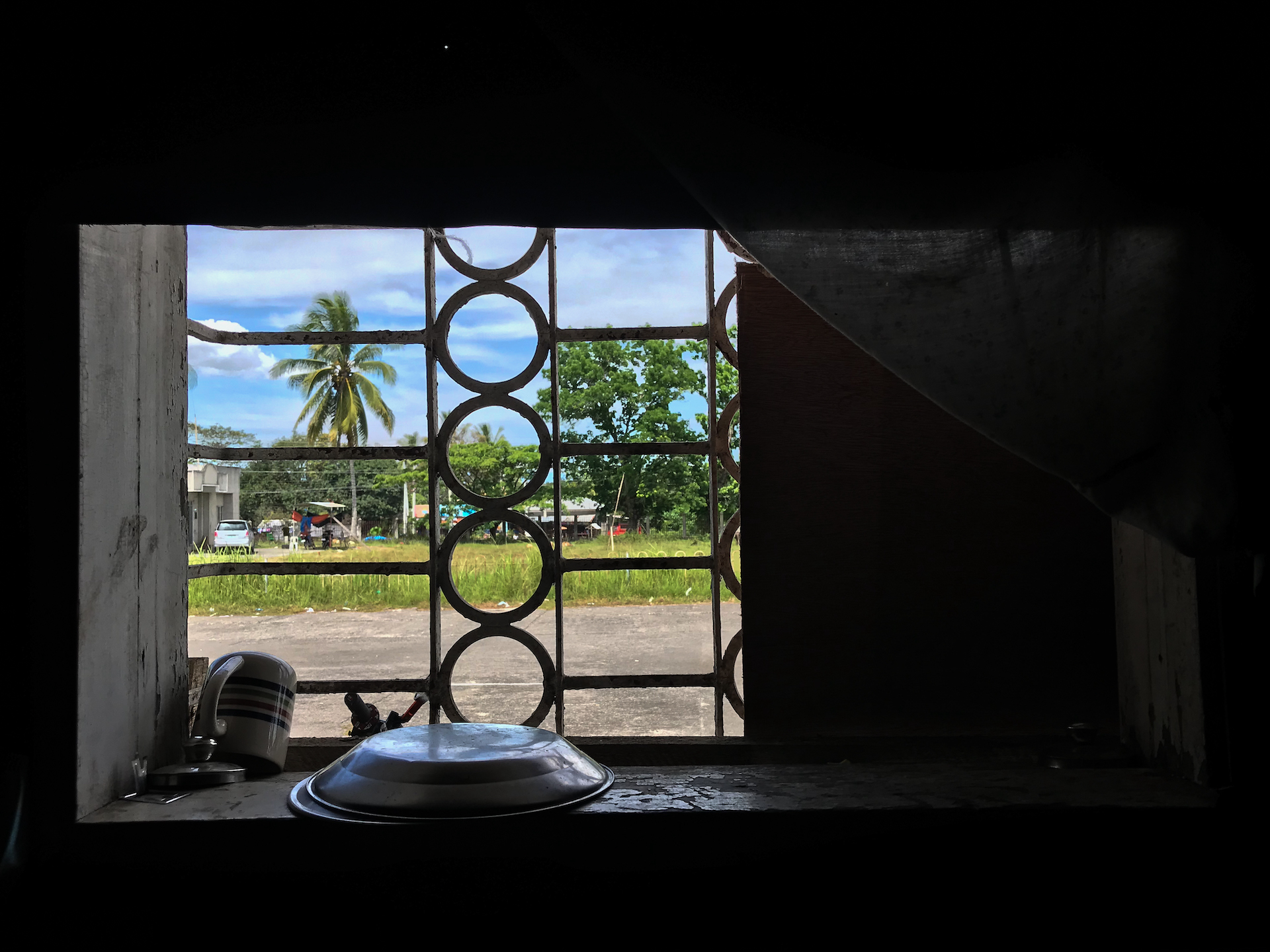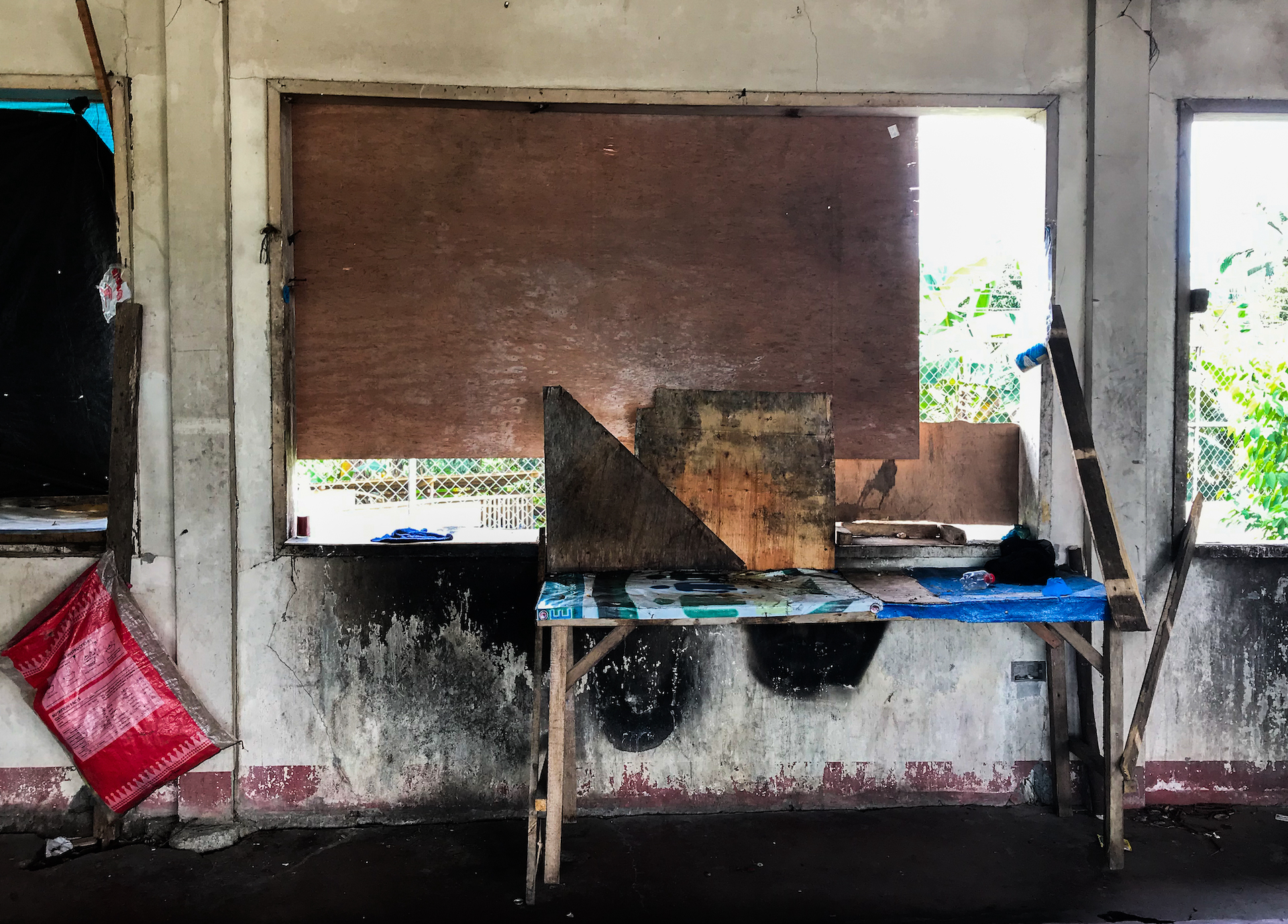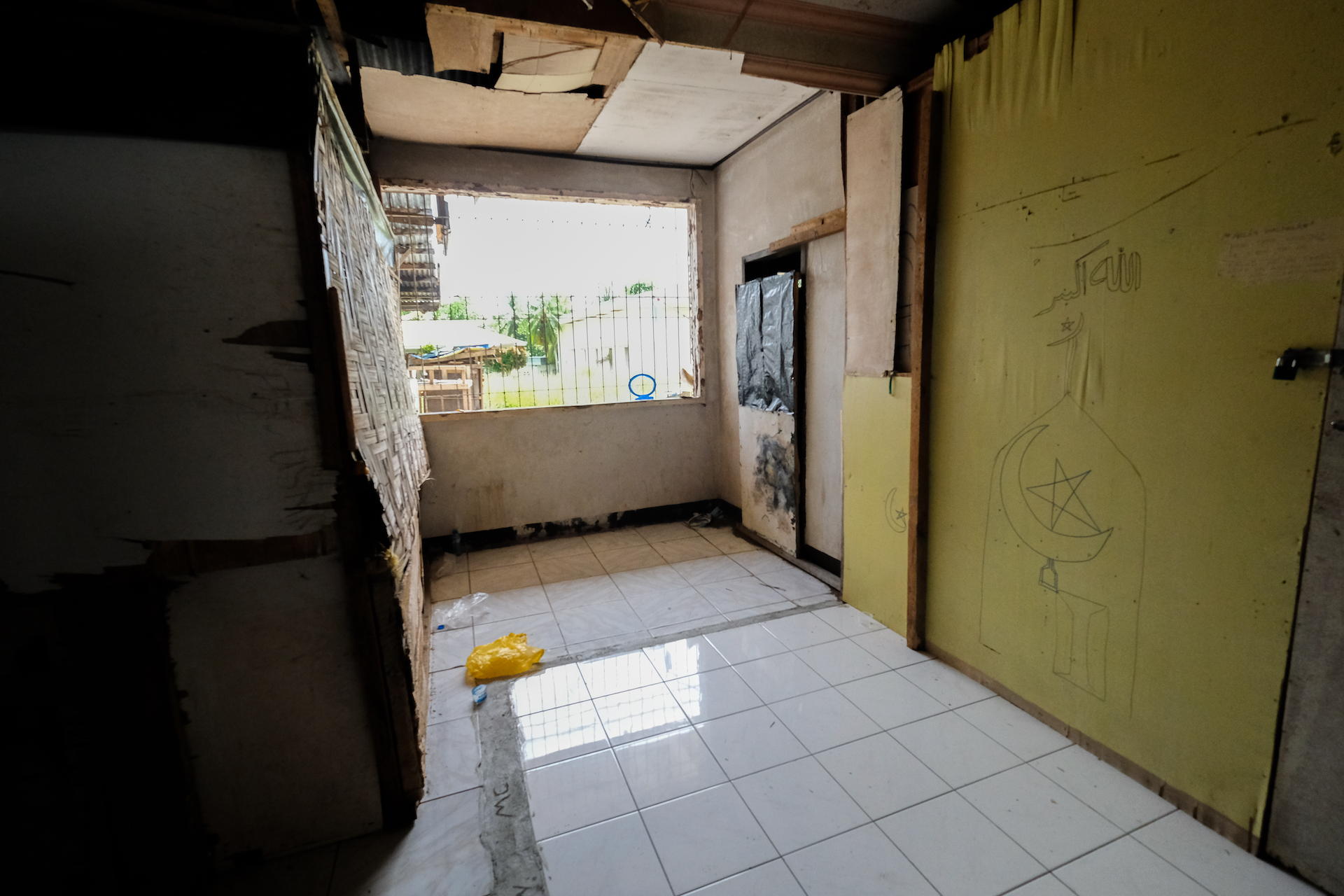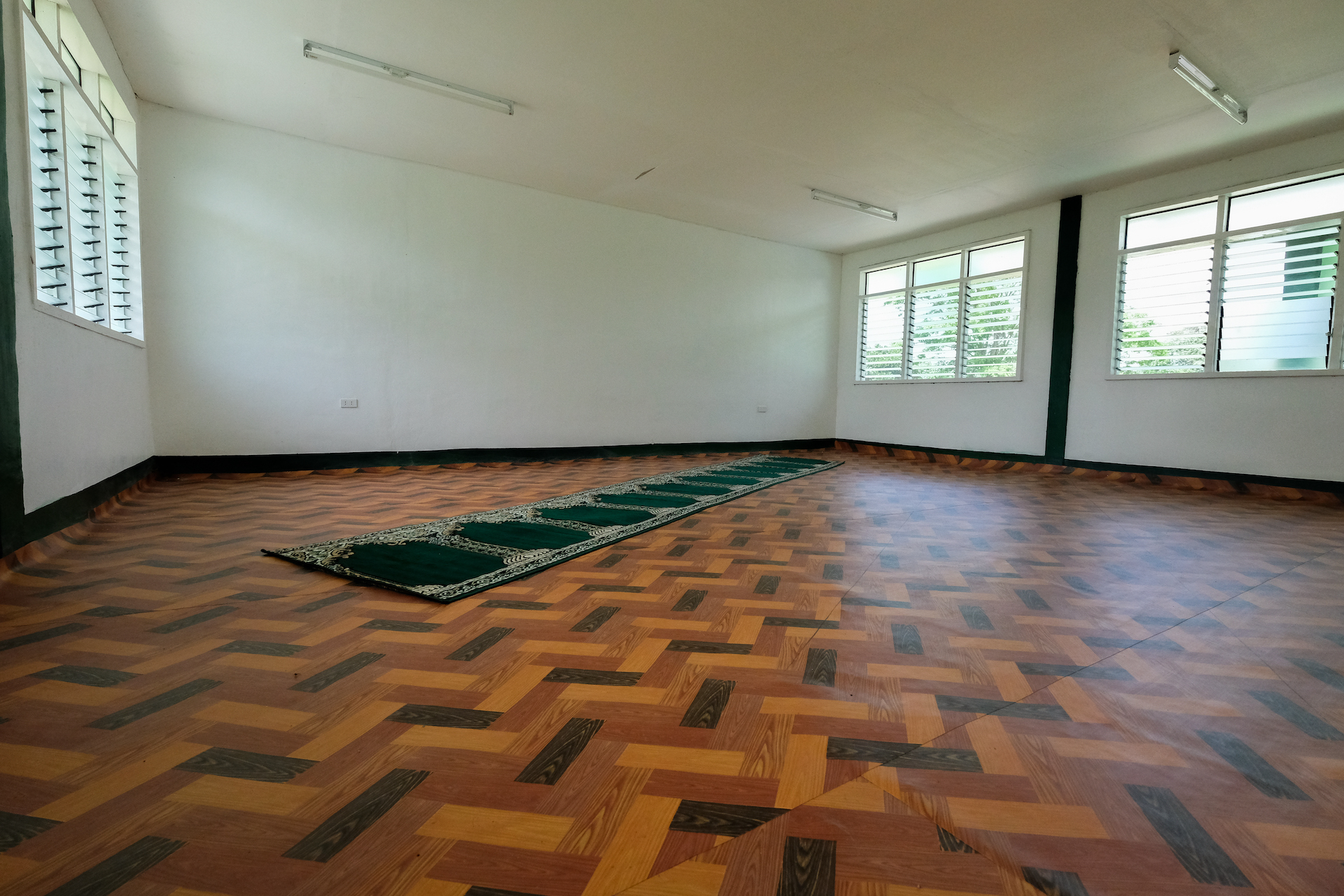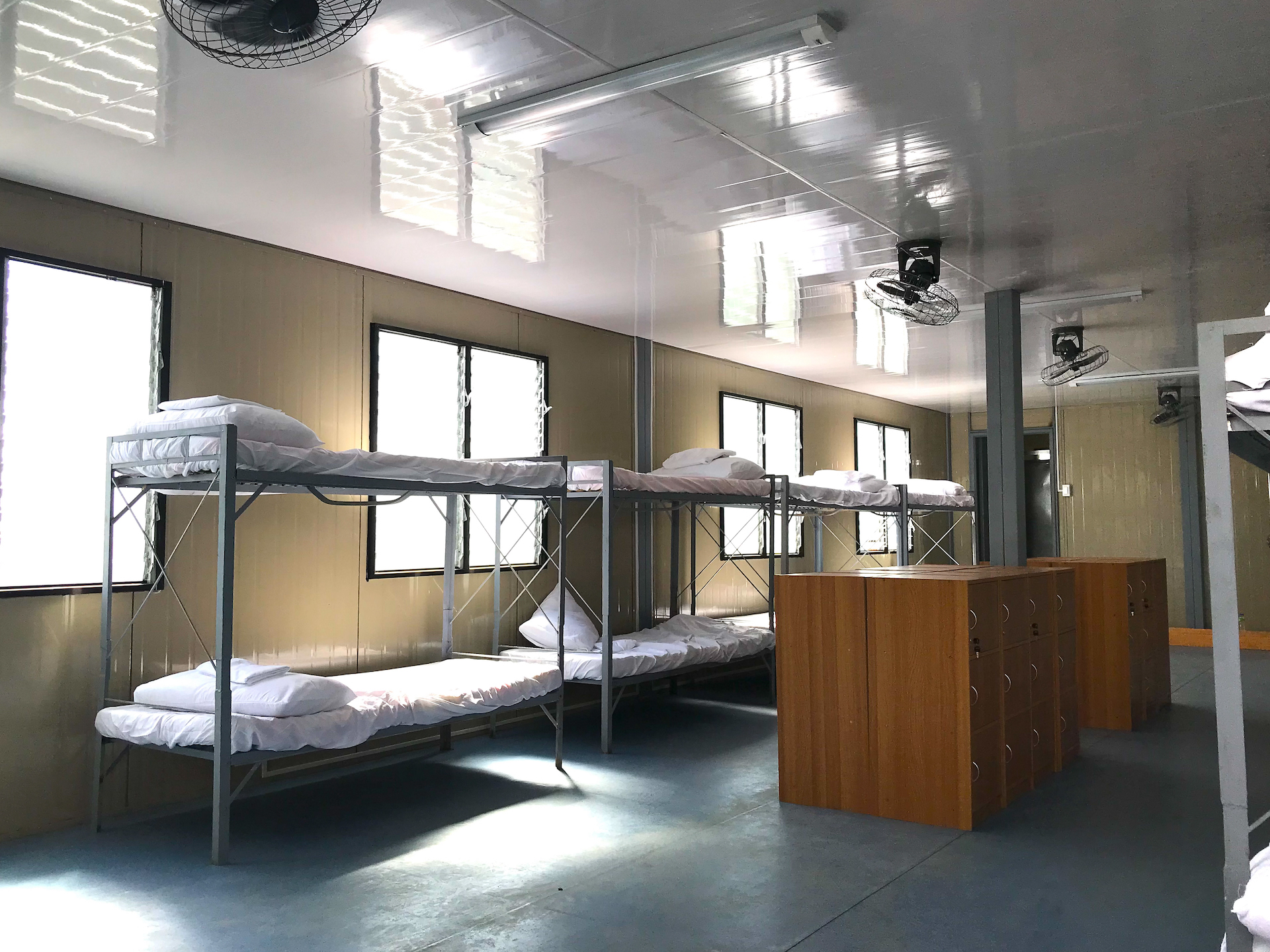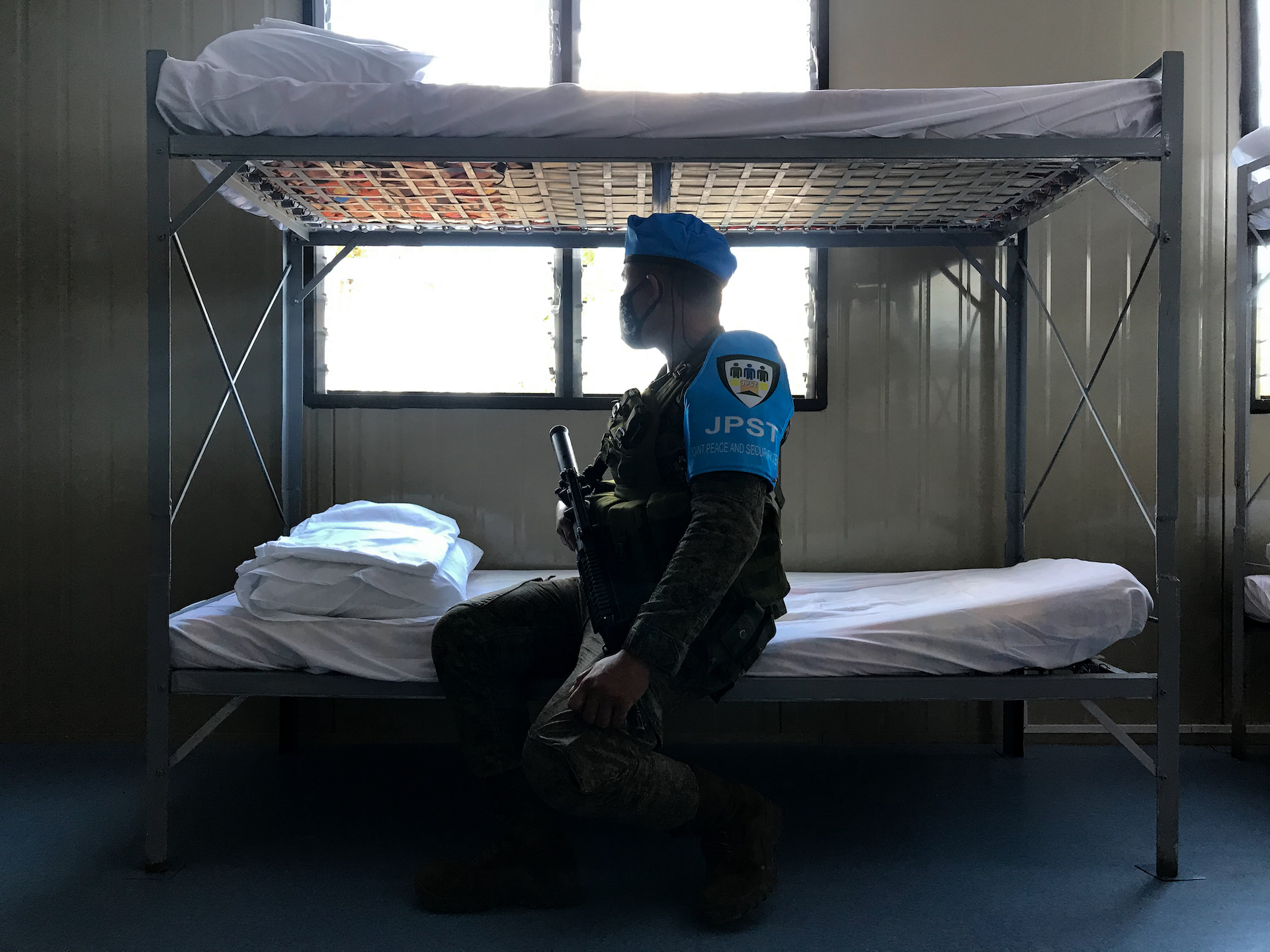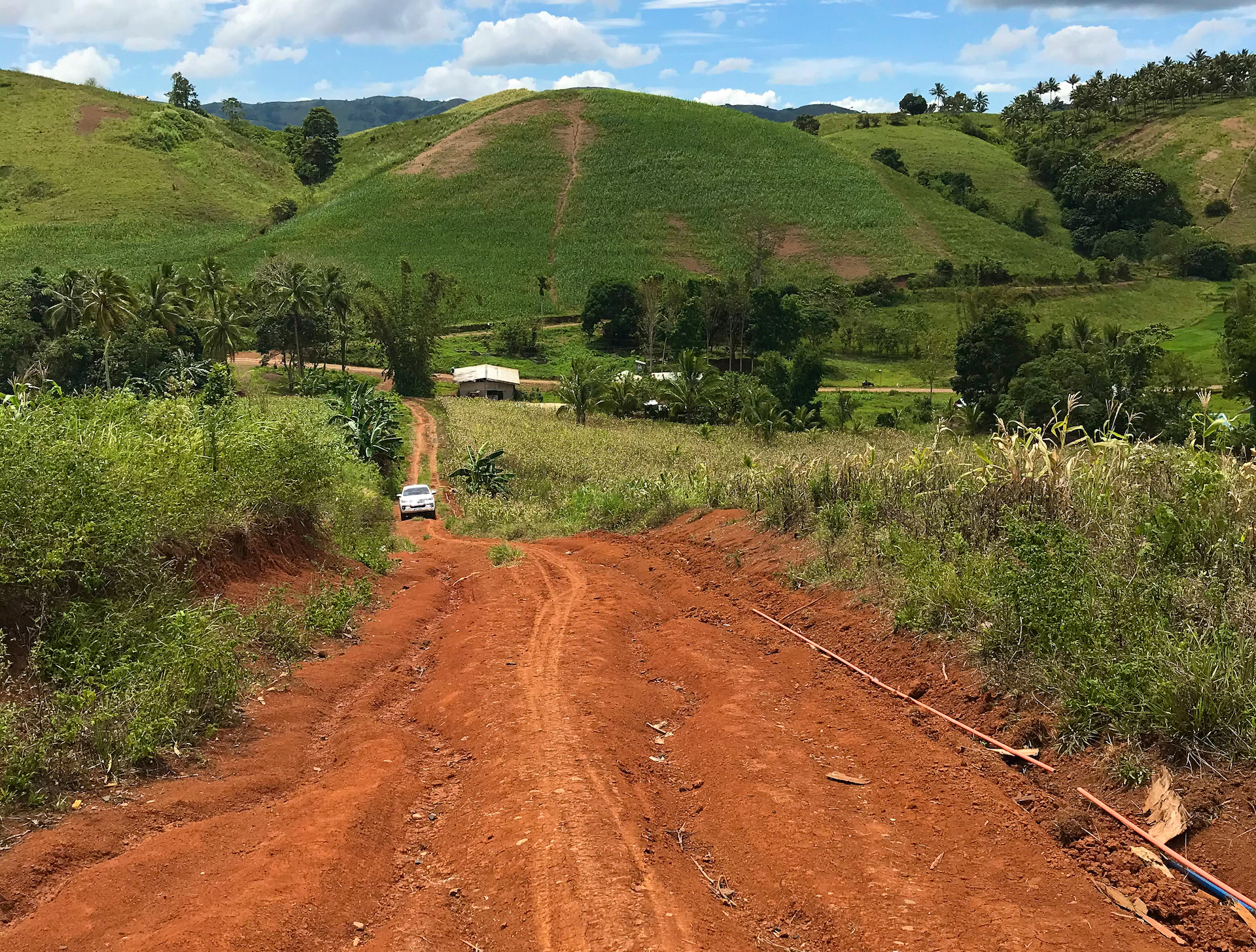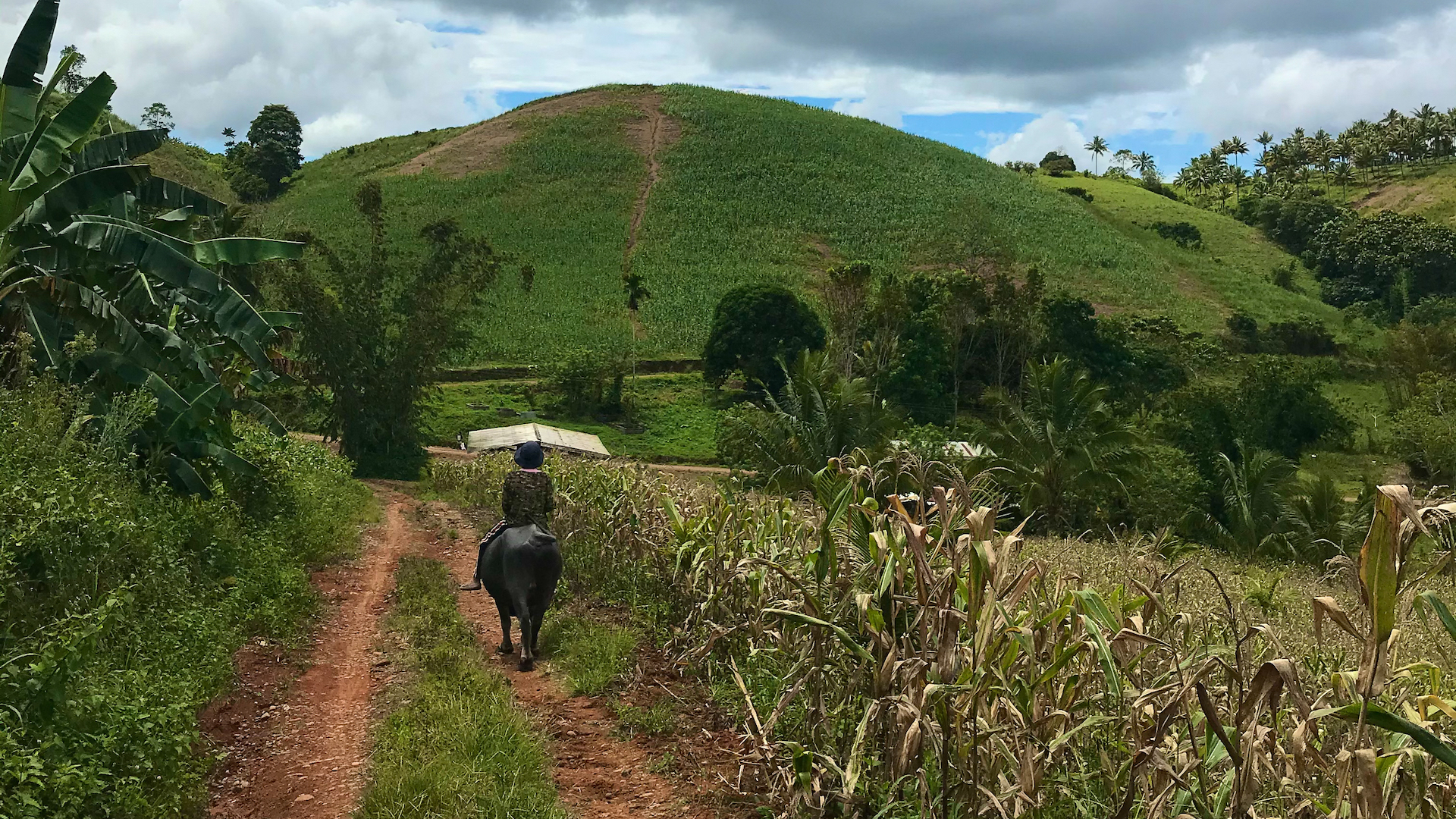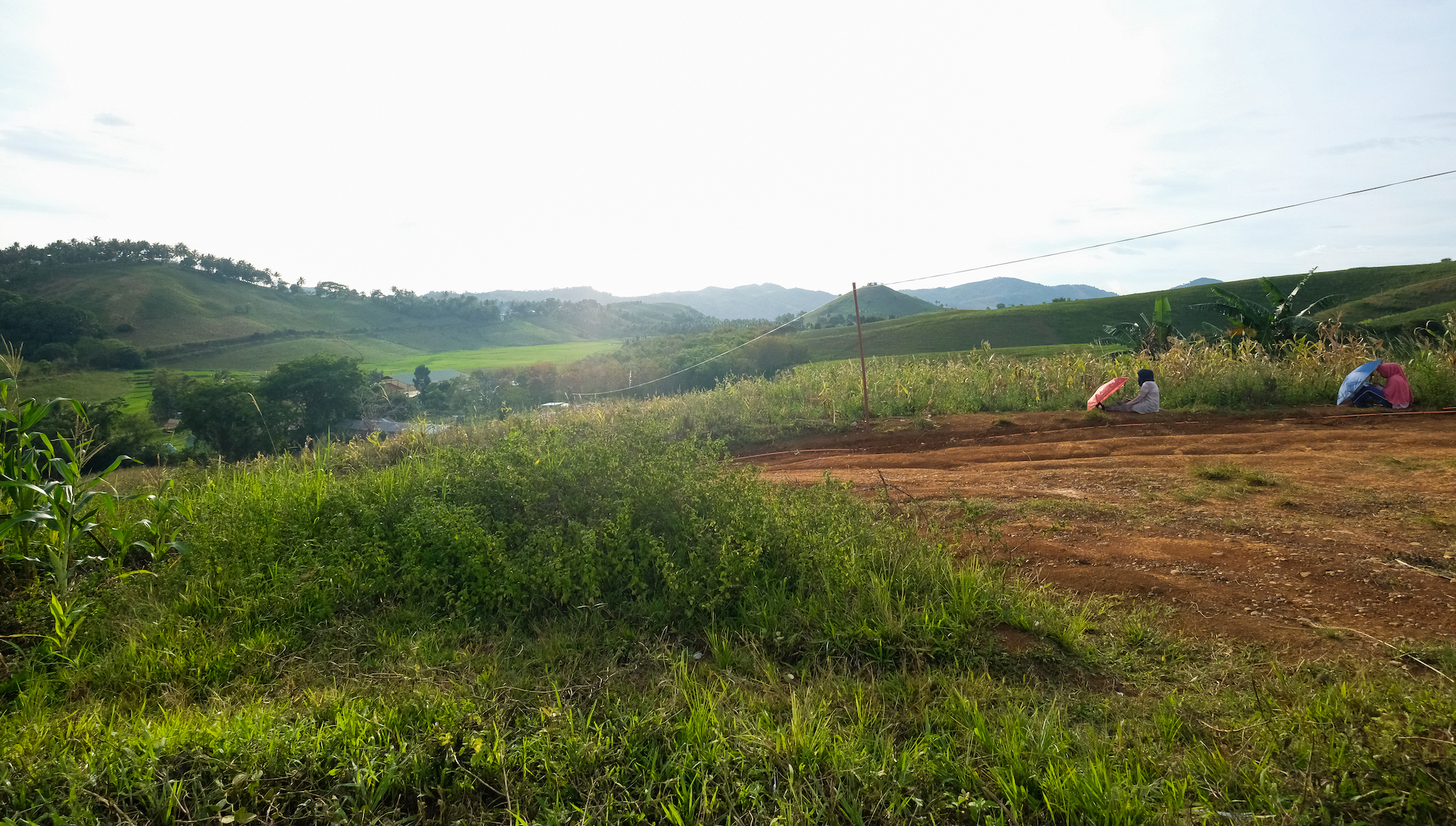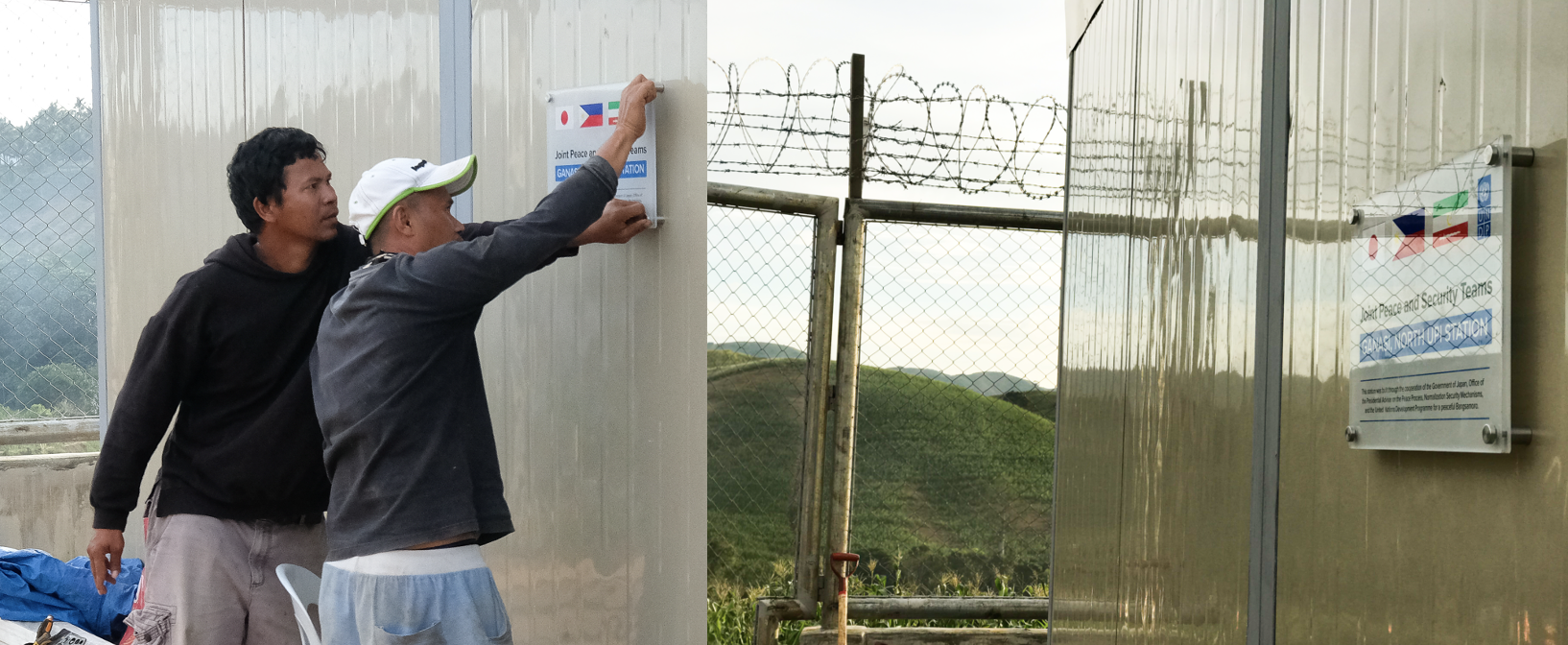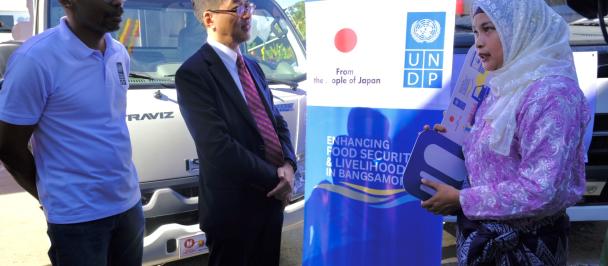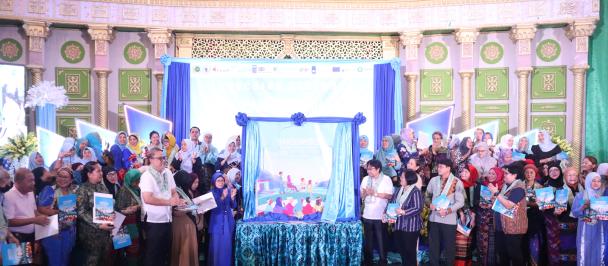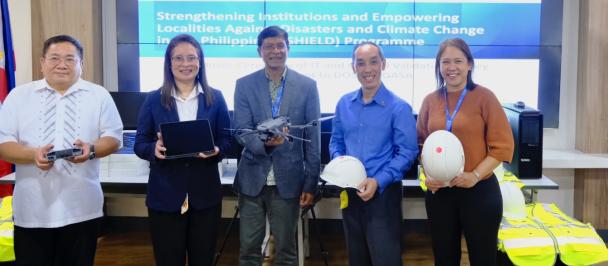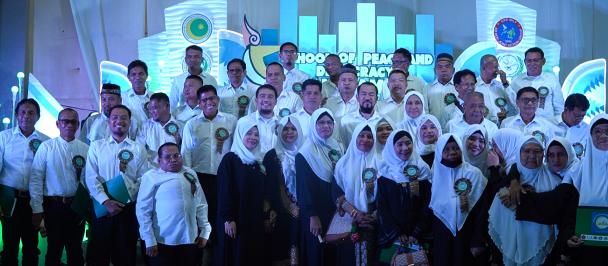By Remelizza Joy Sacra, Communications/UNDP Philippines
What a Peace Station Means to Moro Communities
March 30, 2021
The Ganasi Station of the Joint Peace and Security Teams located in North Upi, Maguindanao brings hope that a lasting peace in this part of the Bangsamoro Region is finally within reach.
On top of a corn field mound, metal bunkbeds were prepped; white crisp blankets were unwrapped; and the blue vinyl covering the floor were dusted. Electric and water lines have finally crept their way through the steep hills. Good omen that the peacekeeping station would be ready for turnover.
Except for the plate marker.
We almost forgot to install the plate marker that will symbolize the peace-building partnership between the Bangsamoro and the Philippine Government. As I check out the entrance of the station to ensure the placement and visibility of the marker, I heard not too far a man’s voice.
Dream come true: Dante Boyantwo is an MILF member and part of the construction team of the Ganasi Station.
“Sa wakas. Ang tagal naming pinangarap ‘to, Sir. Ang dami nang namatay ng mga ninuno namin dahil dito. Sa awa ng Panginoon, mayroon na,” a man on his mid-thirties said.
(At long last. We have been dreaming and wishing for this. A lot of people died because of this [conflict]. With God’s mercy, it (peace) is finally here.)
The man’s voice was hopeful but, at the same time, sad. He was talking to the construction engineer. Tears flanked his eyes as he smiled down to the plate marker. He is Dante Boyantwo, 36 years old and a member of Moro Islamic Liberation Front (MILF) from Ganasi in North Upi, Maguindanao.
For more than four decades, the Bangsamoro Autonomous Region in Muslim Mindanao (BARMM) – formerly the Autonomous Region in Muslim Mindanao (ARMM) – has been in the middle of armed struggle, as the region's residents fought for the right to self-determination. The problem of violence was complicated by land conflicts, violent extremism, and inter-ethnic tensions.
In 2014, the Philippine Government finally signed a peace agreement with the MILF, ending decades of conflict and struggle that claimed more than 150,000 lives from both ends.
Dante’s parents are part of that number.
“Namatay ang mga magulang ko nang dahil sa giyera. Maraming ninuno ko ang namatay. Itong kapayapaan ‘yung hinahangad nila. Hindi man nila naranasan, kahit ‘yung anak ko na lang ang makaranas,” said Dante.
(My parents and ancestors died because of war. They only wanted peace. Even though they passed on already, at least, my son can experience a peaceful life.)
The conflict not only took away Dante’s parents but also robbed him of his early life. But on that day, Dante witnessed a lifetime dream coming true.
The peacekeepers: Fifty percent (50%) of the composition of one JPST unit are former MILF combatants.
The formation of the Joint Peace and Security Teams (JPST) is part of the Comprehensive Agreement on the Bangsamoro (CAB). Each JPST unit is a 30-man composite team from the Armed Forces of the Philippines, Philippine National Police, and the MILF – half of which are former combatants. The joint peacekeeping team ensures the safety and security within the areas mutually agreed by the Philippine Government and the MILF. They also provide peace and security assistance during the decommissioning of MILF combatants and other normalization-related activities.
Partnership for peace: The joint effort of OPAPP, Japan, and UNDP to support the normalization process have come into fruition with four barracks and two stations already turned over to JPST.
In support to the normalization process, the Office of the Presidential Adviser on the Peace Process (OPAPP) and the United Nations Development Programme (UNDP) implemented the Support to Peacebuilding and Normalization (SPAN) Project while Japan has generously provided support through the UNDP-Japan Assistance to Normalization partnership. Both initiatives aim to provide assistance in the deployment of the JPST and the establishment of peacekeeping stations in the Bangsamoro Region, which will serve as their base of operations. To date, four barracks and two stations have already turned over to the JPST, and which currently house 216 of the total 246 deployed JPST members.
Prior to the turnover, several units of JPST were stationed in the Old Provincial Capitol Site Barangay Simuay in Sultan Kudarat, Maguindanao. Within the dilapidated walls of abandoned buildings, makeshift quarters and bunkbeds were installed. The narrow empty hallways served as prayer rooms. Their mess halls were open areas with improvised sink and dirty kitchen with limited access to water.
Makeshift quarters: In the Old Provincial Capitol Site which served as their temporary barracks, the JPST members re-used plywoods, old tarpaulins, and cartons to set-up a temporary station.
Without proper ventilation, this small window provides a respite to its JPST occupant in the former barracks.
An improvised kitchen sink and cooking area had been the mess hall of JPST members who were briefly stationed in Sultan Kudarat, Maguindanao.
With an outline of a mosque drawn on the dilapidated wall, this dead-end hallway served as the prayer room for Muslim JPST members.
Part of the SPAN Project is to provide logistical and operational support to the peacekeeping teams. Hence, the newly constructed station in Barangay Ganasi, North Upi, Maguindanao will provide a more decent quarters for 30 peacekeepers who were stationed beforehand in the Old Provincial Capitol Site.
In the newly renovated barracks within the Old Provincial Capitol Site, there is a designated prayer room with vinyl-covered floor and a prayer carpet.
Metal bunkbeds with new mattresses were provided in all of the barracks and stations constructed under SPAN and UNDP-Japan Assistance to Normalization projects.
No more makeshift plywood beds for PMSG Bayao as he became part of the JPST unit who transferred to the newly constructed Ganasi Station.
The presence of a joint peacekeeping team in Dante’s community is a milestone for the town of North Upi, as far as he can remember. According to locals, Ganasi used to be a notorious ‘backdoor’ route for kidnappers and other lawless elements. To this day, the long road snaking up the hilly valley of Ganasi has remained unpaved and turns muddy and slippery during the rainy season.
The community relies solely on corn farming. Most of the lands are owned by the wealthy but Dante’s family was lucky to own a small piece of land that yields corn worth P45,000 every year. Certainly not enough to support his family. In times of bad harvest, Dante earns nothing but he has to make up P5,000 for the costs incurred.
The unpaved hilly roads of Barangay Ganasi is surrounded by corn fields. Local residents are not allowed to travel using motorized vehicle during a heavy downpour to avoid being trapped in the muddy road.
So, Dante engaged in carpentry and other side jobs. That is why he was employed as a laborer and ‘security’ during the construction of the Ganasi Station.
For Dante, it was his personal gesture of peace and camaraderie to be part of the construction team who built the peacekeeping station. His relatively ‘humble’ contribution to the Bangsamoro, as he compared it to the lives his parents lost in fighting for peace and right to self-determination of Moro communities.
No motorcycle, no problem: Growing up in a farming community, a young boy was riding at the back of a carabao going down the main road from the hill near the Ganasi station.
The corn field was their classroom: Two young girls were sitting on unleveled grassy area to attend their online class on a hot afternoon. This is one of the very few spots in Ganasi where mobile internet connection is relatively good.
More than just a structure, the JPST station in Ganasi is a towering symbol of peace which brings him a sense of security that there will be no more gunshots and clanking of riffles in the middle of the night. That his son, together with other children, can play barefoot and ride their carabaos without worry of possible encounters any time of the day. That even in a pandemic and under limited mobility, young students can safely study in the middle of the corn field – the only spot blessed with internet signal for their combined modular-online class (talk about digital divide but that’s another story).
So, back to the plate marker, did we successfully install it?
Yes, Dante did.
It was a symbolic moment to see Dante Boyantwo (left), who was once part of the armed struggle, installed the peacekeeping station's plate marker in the Ganasi, North Upi, Maguindanao.
Post-script:
As I go back to my duty station, I have kept with me the story of Dante and the frame of those two young and determined students studying in the middle of the corn field on a hot afternoon. It dawned to me that our work should be measured beyond numbers. At the end of the day, it should boil down on the impact that we create to a life or to many. These narratives, after all, will always remind us why we do what we do.
###

 Locations
Locations